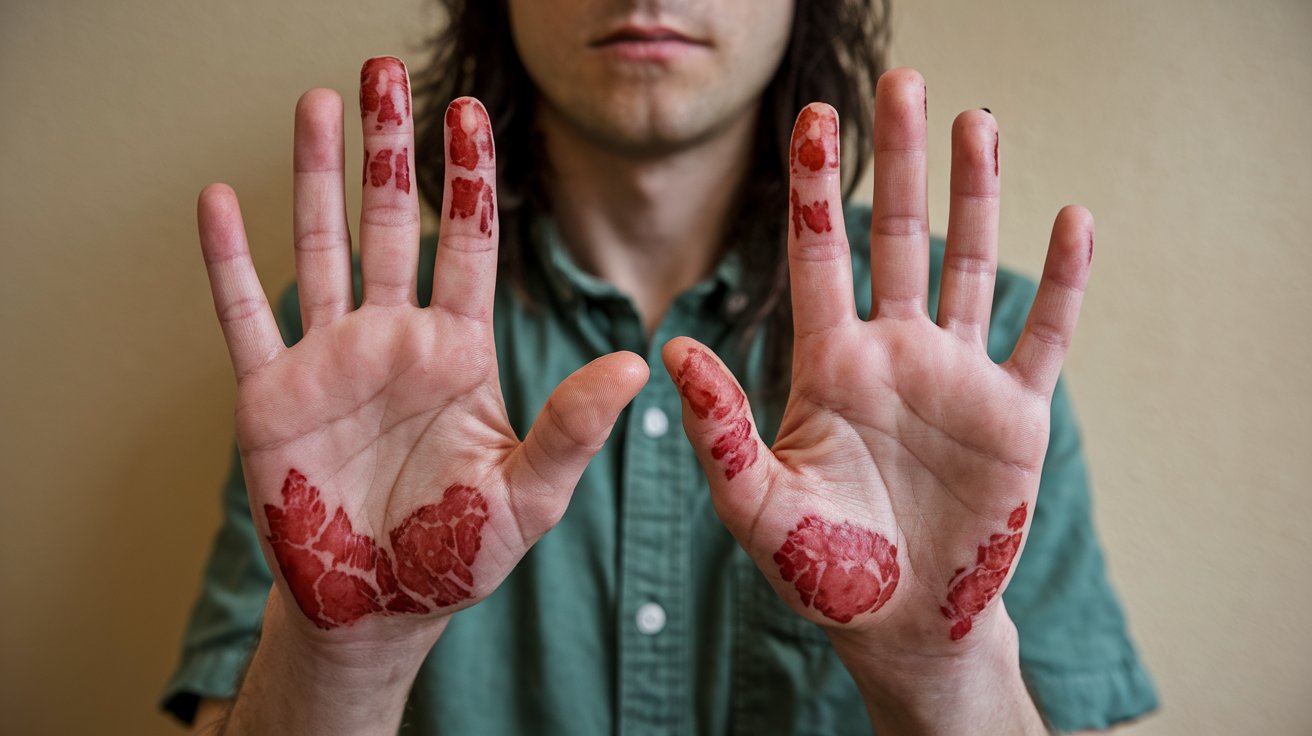
Papillon-Lefèvre Syndrome (PLS) is a rare genetic disorder that affects both the skin and teeth. Named after French physicians M.M. Papillon and Paul Lefèvre, who first described it in the 1920s, this condition is caused by mutations in the CTSC gene. People with PLS experience severe periodontitis, leading to the premature loss of primary and permanent teeth. Additionally, they develop dry, scaly patches on the palms and soles, known as palmar-plantar hyperkeratosis. Symptoms usually appear between ages one and five. The disorder is inherited in an autosomal recessive pattern, meaning both parents must carry the mutated gene. Understanding PLS is crucial for early diagnosis and effective management.
Key Takeaways:
- Papillon-Lefèvre Syndrome is a rare genetic disorder affecting skin and teeth, causing symptoms like premature tooth loss and skin lesions. Early diagnosis and comprehensive management are crucial for improving patients' quality of life.
- Genetics and ethnicity play a crucial role in the prevalence and expression of Papillon-Lefèvre Syndrome. Consanguinity and ethnic distribution contribute to the higher incidence of the syndrome in certain populations.
What is Papillon-Lefèvre Syndrome?
Papillon-Lefèvre Syndrome (PLS) is a rare genetic disorder that affects the skin and teeth. Let's dive into some key facts about this condition to understand it better.
-
Definition and Prevalence
Papillon-Lefèvre Syndrome is an extremely rare genetic disorder, occurring in just 1-4 cases per million people worldwide. -
Name Origin
The syndrome was first described by French physicians M.M. Papillon and Paul Lefèvre in the mid-1920s. -
Genetic Basis
PLS is caused by mutations in the CTSC gene, which encodes the enzyme cathepsin C. This enzyme is crucial for various inflammatory and immune processes. -
Inheritance Pattern
The disorder is inherited in an autosomal recessive pattern. Both parents must carry the mutated gene for their child to develop PLS.
Symptoms and Clinical Presentation
Understanding the symptoms and clinical presentation of PLS can help in early diagnosis and management.
-
Age of Onset
Symptoms typically appear between ages one to five, though they can start as early as infancy or as late as early childhood. -
Palmar-Plantar Hyperkeratosis (PPK)
Dry, scaly patches develop on the skin of the palms and soles, a hallmark of PLS. -
Severe Periodontitis
Inflammation and degeneration of the structures supporting the teeth lead to premature tooth loss. -
Nail Dystrophy
Abnormalities in the nails, such as dystrophy and transverse grooving, are common. -
Hyperhidrosis
Excessive sweating, particularly on the palms and soles, often accompanies PLS. -
Pyogenic Skin Infections
Frequent skin infections that produce pus are another symptom.
Dental Issues in PLS
Dental problems are a significant aspect of PLS, affecting both primary and permanent teeth.
-
Tooth Loss
Primary teeth often become loose and fall out by about age five. Without treatment, most permanent teeth may also be lost by age 17. -
Periodontal Disease
The periodontal disease associated with PLS is severe and unresponsive to traditional treatments. Inflammation subsides after tooth loss but recurs with new teeth. -
Gingival Inflammation
Gingival inflammation leads to rapid destruction of the periodontium, repeating with the eruption of permanent teeth.
Dermatological Involvement
The skin is also significantly affected in PLS, with various dermatological symptoms.
-
Symmetric Keratotic Plaques
Children may present with symmetric, well-demarcated, yellowish keratotic plaques on the palms and soles. -
Psoriasiform Plaques
Well-circumscribed, psoriasiform, erythematous, scaly plaques can appear on the elbows and knees. -
Painful Fissures
Skin lesions can be painful and may worsen in winter, associated with painful fissures.
Genetic and Ethnic Factors
Genetics and ethnicity play a crucial role in the prevalence and expression of PLS.
-
Consanguinity
Close familial relationships, or consanguinity, contribute to the incidence of PLS. Studies show 75% of Arab probands were products of close parental consanguinity. -
Ethnic Distribution
PLS is more prevalent among Arab and Indian populations, as well as in isolated communities, due to higher rates of consanguineous marriages.
Management and Treatment
Managing PLS involves a combination of dental and dermatological treatments.
-
Conventional Periodontal Treatment
Management includes conventional periodontal treatment, oral hygiene instructions, antiseptic mouth rinses, and systemic antibiotics. -
Skin Treatment
Skin lesions are treated with topical emollients, keratolytic agents, steroids, and oral retinoids. -
Dentures
Maxillary and mandibular full dentures can enhance facial height and improve oral function. -
Dental Implants
After age 18, dental implants may be considered to replace missing teeth. -
Medications
Topical use of keratolytic drugs containing 5% salicylic acid can treat skin lesions. Acitretin, an oral retinoid, is recommended for keratinizing diseases like PLS.
Psychological and Social Impact
The psychological and social impact of PLS can be significant, especially in children.
-
Psychological Impact
Children with PLS may experience long-term functional, esthetic, psychological, and social consequences due to rapid deterioration of their oral and skin conditions. -
Quality of Life
Achieving and preserving healthy oral conditions is crucial for improving the quality of life in patients with PLS. Early identification and comprehensive management can significantly reduce the psychological and social impact of the syndrome.
Final Thoughts on Papillon-Lefèvre Syndrome
Papillon-Lefèvre Syndrome (PLS) is a rare genetic disorder that affects both the skin and teeth. It’s caused by mutations in the CTSC gene and inherited in an autosomal recessive pattern. Symptoms usually appear between ages one and five, including severe periodontitis and palmar-plantar hyperkeratosis. The condition leads to premature tooth loss and painful skin lesions. Management involves a combination of dental care, antibiotics, and topical treatments for skin issues. Early diagnosis and treatment are crucial to improving quality of life and minimizing psychological impact. Though rare, PLS is more common in certain populations due to consanguineous marriages. Understanding PLS helps in providing better care and support for those affected. Comprehensive management can significantly reduce the social and psychological challenges faced by individuals with this condition.
Frequently Asked Questions
Was this page helpful?
Our commitment to delivering trustworthy and engaging content is at the heart of what we do. Each fact on our site is contributed by real users like you, bringing a wealth of diverse insights and information. To ensure the highest standards of accuracy and reliability, our dedicated editors meticulously review each submission. This process guarantees that the facts we share are not only fascinating but also credible. Trust in our commitment to quality and authenticity as you explore and learn with us.


